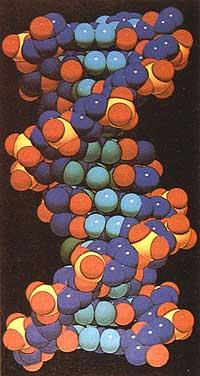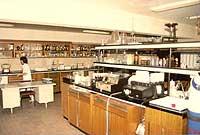Strategies for the prevention of cancer
DETECTION OF CARCINOGENS

The detection of carcinogens, i.e., the detection of carcinogenic factors, is performed by different pathways. Some of them are:
Epidemiological pathways
Studies carried out so far show that most of the neoplasms, that is, the formations of new tumor tissue, have their origin, at least in part, in non-hereditary factors. Therefore, a joint effort will be needed to identify these risk factors and develop ways of elimination or weakening. Studies on the variations in cancer rates among different human groups carried out with this objective offer one of the most effective tools. Other pathways, such as carcinogenic effects derived from animal studies, cannot always be extrapolated to the human being.
Method of bioessay
The possible carcinogenicity of a certain chemical is highly correlated with the different species. For this reason, chemical substances are tested in animals to know their carcinogenicity in the human being. If properly practiced tests result in neoplasms in animals, they will normally be considered carcinogenic to humans and will be treated as such.
If we attend to the implications offered by the results of animal testing, it will be possible to take measures to avoid the exposure of man to these carcinogens, since before the appearance of cancer in the human being a long period of induction passes. As a result, biosessions of chemicals with suspicious carcinogenic activity are a fundamental part of the cancer prevention strategy, especially when there are no previous experiences to prevent the influence of recently synthesized chemical compounds in humans.
But these bioassays with animals have a high cost and become very slow. Therefore, efforts to develop faster, cheaper testing should be a priority. Although the reliability of this test is pending to be fixed, they are widely extended in the selective prevention of chemical compounds, and are fully recommended in the multiple trial system or in the in vitro test section.
DETECTION OF HIGH-RISK INDIVIDUALS
Precancerous lesions

Some lesions that contribute to the development of cancer are already known. For example, it is estimated that women with cervical dysplasia or developmental abnormality have a risk of developing a carcinoma of the cervix 1600 times higher than in normal women. However, it has been shown that the elimination of carcinoma in situ can prevent aggressive carcinoma of the neck.
Since the detection and treatment of these lesions can reduce the risk of people not affected by cancer, the effort to identify and treat these lesions should be present in the preventive strategy of any cancer.
Situations of high sensitivity
Many times there are hereditary situations that are associated with added sensitivity. One of the clearest examples is pigmented xeroderma. This disease, an underlying autosomal disease, presents the following characteristics: Defective DNA composition, increased sensitivity to sunlight, and a relatively high risk of skin cancer in the early stages of life.
Another category of hereditary diseases associated with a high sensitivity to cancer are the so-called symptoms of the dominant tumor. This disease is known for the appearance of certain special tumors in some families, for precocity throughout life and for its variety. One theory holds that these diseases occur through mutation processes that take place in different stages, at least in two stages.
The first phase consists of a hereditary change present in each body cell. The second implies a change in embryonic or posterior development. People who have inherited this first step have a high risk of cancer from mutagenic agents capable of performing the second.
Among the most sensitive to cancer is the activity of enzymatic systems. The precursors of carcinogens are responsible for converting the final form into radioactive.
To the extent that it is possible to identify people with hereditary sensitivity, measures should be taken to reduce exposure to carcinogens and to prevent premolassic lesions.
Surveillance surveillance and surveillance
The identification of high-risk individuals, the carrying out of inspections to avoid pre-Plastic and neoplastic changes, and their treatment with appropriate measures, require a systematic observation of population groups. At present, in addition to the principles of clinical diagnosis, the use of screening methodology for the detection of early stages of cancer in asymptomatic people is very limited. Among the techniques admitted for this purpose are two: Pap test for the study of the cervix and X-ray mammography to detect early breast cancer used in screening.
EDUCATION EDUCATION

The extent of the distribution of carcinogenic risk factors and the importance of detecting the early stages of cancer development make it necessary to train the public and health professionals to prevent cancer. It is tragic the behavior of our society regarding tobacco so far, even though in many tests tobacco has appeared as the main carcinogen. This situation, in addition to lack of attention, includes conflicts between systems of values, philosophical, political, psychological and socioeconomic perspectives.
It is possible that in the future they will encounter relatively equal problems, as other risk factors are identified, since the weight of the cancer may be due to exposure to many weak carcinogens that act jointly, and not so much to, isolated carcinogens. In addition, the tests that report risk factors, in their first appearance, will practically never be absolute, to the extent that they are mainly based on animal studies. Therefore, it will be necessary for the population to understand the problem properly in order to give an effective social response.
REGULATION
Risk prevention will be ensured through the development of practical safety standards and codes. Society, by custom, relies on these rules to protect individuals or sub-groups of risk. There are a number of legal standards to protect workers, consumers and other citizens from carcinogens. However, it is evident that the development of these standards has often gone after the carcinogenality test and that they have not been adequately met.
However, in the past the problem was complicated, due to doubts and debates to fix the carcinogenicity of a specific agent, and to the evaluation of any risk to the human population. These problems remain unsolved, but there are useful projects.
Buletina
Bidali zure helbide elektronikoa eta jaso asteroko buletina zure sarrera-ontzian











